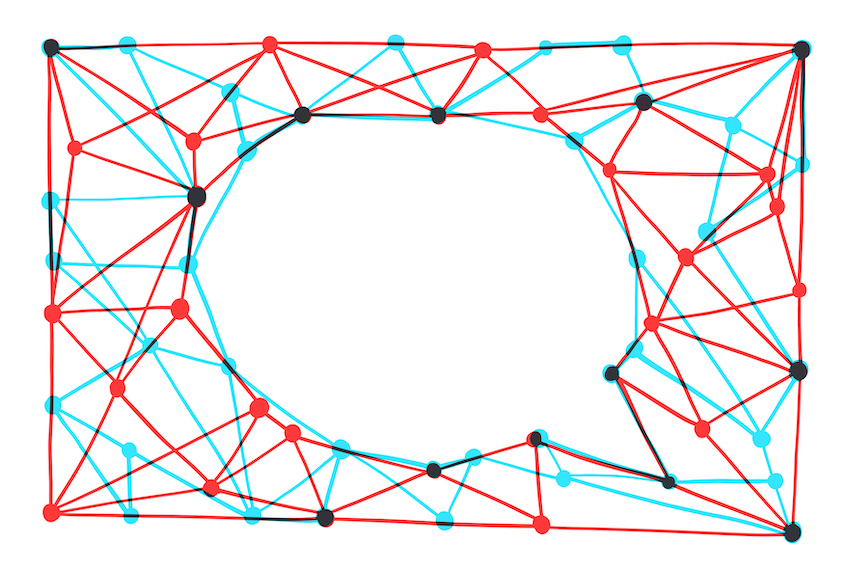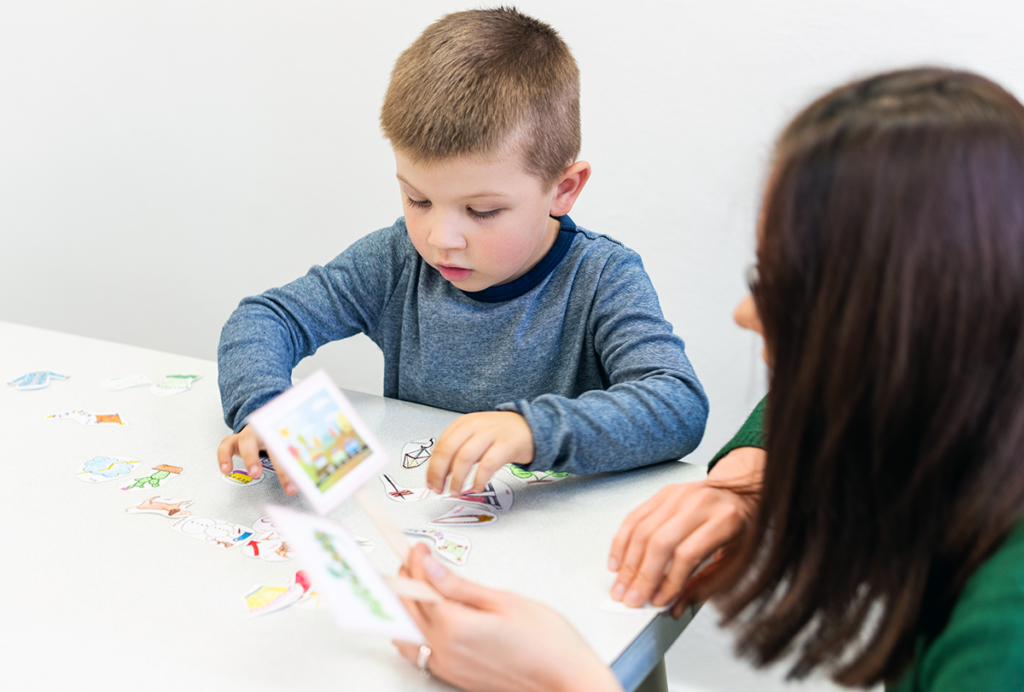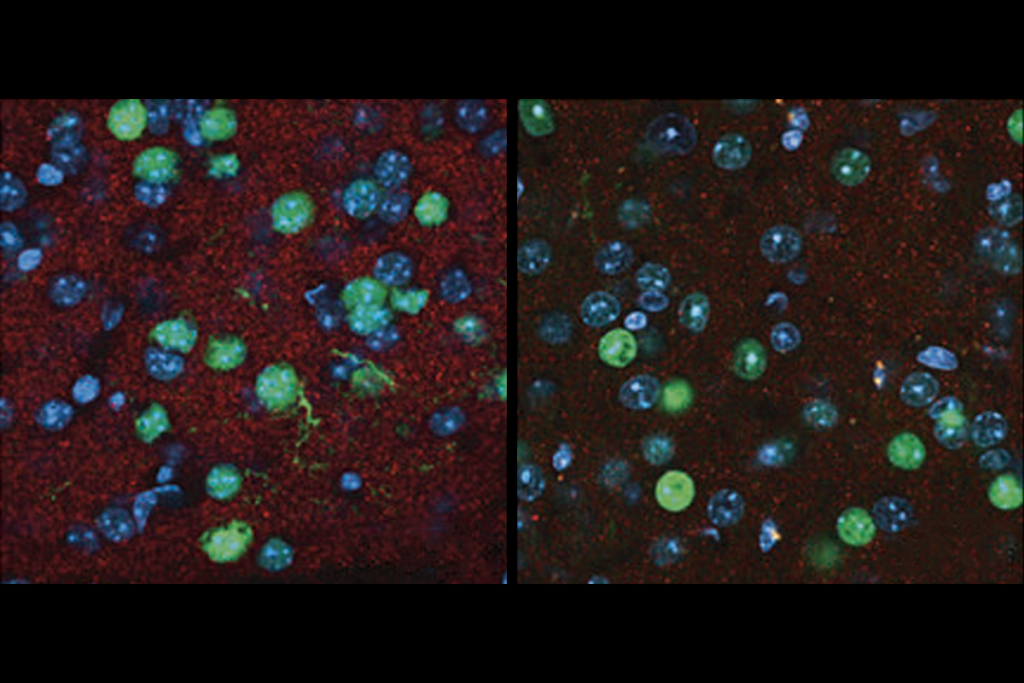The science Twitter-verse has been abuzz this week about a larval fruit fly connectome published 10 March in Science, the most complex complete connectome to date. It includes “all sensory inputs, all interneurons across both brain hemispheres, and all descending neurons,” tweeted Michael Winding of the University of Cambridge in a thread describing his team’s work. Spectrum covered the brain map when it was released.
What makes this connectome special? It’s the full picture: all sensory inputs, all interneurons across both brain hemispheres, and all descending neurons. This allows us to follow sensory information through the brain and investigate how it’s converted to behavioural instructions pic.twitter.com/Kh6eOpFf25
— Michael Winding (@WindingMichael) March 10, 2023
“I’m excited to see what else people do with this awesome dataset,” tweeted study investigator Ben Pedigo of Johns Hopkins University.
I’m excited to see what else people do with this awesome dataset – network is available in the paper supplement, and feel free to reach out with any questions or requests!
— Ben Pedigo (@bpedigod) March 10, 2023
The “huge feat” of mapping the entire connectome will help neuroscientists better understand neurological diseases, tweeted Shyam Diwakar of the Amrita Mind Brain Center.
Mapping the entire #connectome of #Drosophila – a huge feat indeed! Furthering #neuroscientists to study how the #brain works and to better understand neurological #diseases. https://t.co/vWa56VkpaY
— Shyam Diwakar (@regularjoy) March 13, 2023
“Characterizing the connectome in higher animals will help us to understand the functioning of our brain,” tweeted Rebeca Osca of the Salk Institute.
Characterizing the connectome in higher animals will help us to understand the functioning of our brain. Congratulations to @WindingMichael et al on their latest work published in @ScienceMagazine. A great advancement for neuroscience! #NextSteps???????? https://t.co/oYrtIyAgVy
— Rebeca Osca (@rebecaosver) March 11, 2023
This resource will help “change the way we ask and answer questions in neuroscience and pave the way for larger mammalian connectomes,” tweeted Amy Robinson Sterling of Princeton University.
New connectome out in @ScienceMagazine, that of a baby fly. Congrats @WindingMichael @ZlaticLab @albertcardona @neuro_data et al. This resource + upcoming @FlyWireNews adult fly connectome will change the way we ask and answer questions in neuroscience and pave the way for… https://t.co/GApM6aqITh pic.twitter.com/OYPGHC4Oyy
— Amy Robinson Sterling (@amyneurons) March 10, 2023
Another connectome study, posted as a preprint to bioRxiv also on 10 March, earned its share of laudatory tweets. The resource has “structural and functional whole-brain networks” for about 40,000 people and features multiple measures to choose from, tweeted study investigator Andrew Zalesky of the University of Melbourne.
Massive connectome resource
Structural and functional whole-brain networks for 40k individuals
Multiple resolutions, parcellation atlases and connectivity measures to select from and extensive QC.
Mapped by @Sina_Mansour_L https://t.co/YWdFotDbT2
— Andrew Zalesky (@AndrewZalesky) March 11, 2023
The project took 20 years’ worth of computing time to complete, and the connectomes are all available on the U.K. Biobank data-sharing platform. The resource could “enable new studies of the human connectome in health, disease and aging at an unprecedented scale,” according to the preprint.
“We provide the largest brain connectivity resource to date,” tweeted study investigator Sina Mansour L., also of the University of Melbourne. Mansour also shared a link to the code used to create the connectome, “including example scripts on how to use the resource.”
Overall, we provide the largest brain connectivity resource to date, with several functional time series (27 per session) and structural connectivity matrices (28 per session) totaling more than a million pre-computed alternative connectomes.
— Sina Mansour L. (@Sina_Mansour_L) March 12, 2023
“What a massive endeavor providing not one but 28 out-of-the-box versions of structural and functional brain networks, including intermediate data and code,” tweeted Florian Ph.S Fischmeister of the Medical University of Vienna.
What a massive endeavor providing not one but 28 out-of-the-box versions of structural and functional brain networks, including intermediate data and code.
Connectomes for 40,000 UK Biobank participants: A multi-modal, multi-scale brain network resource https://t.co/WY0PtjlLhO
— Florian Ph.S Fischmeister (@FPFischmeister) March 14, 2023
“This is an incredible effort, thank you for making these data available!” tweeted Leonardo Tozzi of Stanford University.
This is an incredible effort, thank you for making these data available!
— Leonardo Tozzi (@LeonardoTozzi1) March 13, 2023
That’s it for this week’s Community Newsletter! If you have any suggestions for interesting social posts you saw in the autism research sphere, feel free to send an email to [email protected].
Follow us on Facebook, Twitter (@Spectrum), Instagram and LinkedIn.



